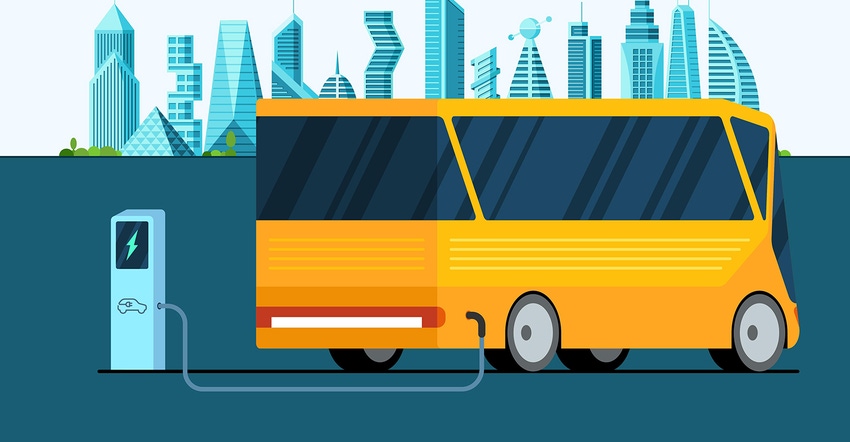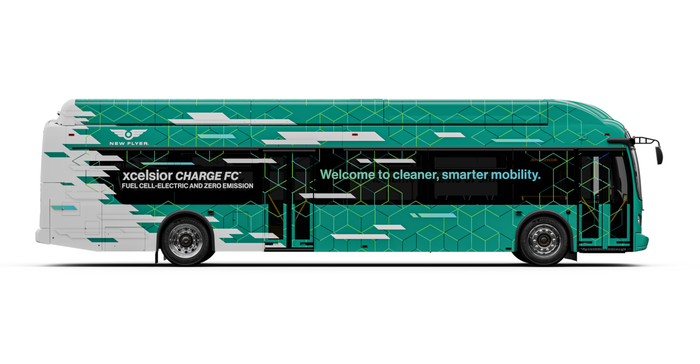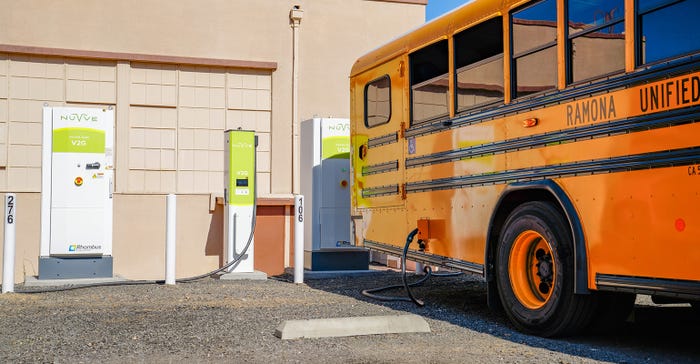Many bidirectional charging pilot programs are taking place in California to demonstrate the great commercial value intrinsic in vehicle-to-building and vehicle-to-grid technologies.

Active members of the bidirectional charging boom—electric vehicle makers, utilities, environmental advocates, etc.—are aware of the great commercial potential of bidirectional technologies to help reduce environmental pollution and fossil fuel dependency. The integration of e-mobility and the power grid is ongoing: Here are some pilot projects taking place in California.
Vehicle-to-building pilot project
In October, a new project funded by the California Energy Commission (CEC) will demonstrate the value of bidirectional electric vehicle charging to support a first-of-its-kind vehicle-to-building (V2B) resilience hub. This pilot study is known locally as “V2B Oakland” and will be executed by a powerhouse green energy project team: Center for Transportation and the Environment (CTE), The Mobility House, AC Transit, New Flyer, Schneider Electric, City of Oakland and WOEIP.
This groundbreaking project will leverage stored energy from zero-emission electric buses, owned and operated by AC Transit, to provide filtered air conditioning at the West Oakland Branch of the Oakland Public Library for local residents in the event the library is used as a public shelter during emergencies and outages.
Each battery electric bus (BEB) will contribute six hours of backup power to the critical loads at the library, and each hydrogen fuel cell-electric bus (FCEB) will provide up to 11 continuous hours of backup power, displacing nearly 100 pounds of carbon emissions per hour compared to traditional diesel backup generators. This project also marks the first time a US transit agency will have the capability to use a hydrogen vehicle for V2B backup power.

“It is also exciting to demonstrate how different technologies can integrate with each other so seamlessly and intelligently to allow for crucial backup power for the community and infrastructure,” said Jana Gerber, President of Microgrids North America at Schneider Electric.
“This platform, the first vehicle-to-everything fuel cell-electric bus in the world, will change the game for electric propulsion technology and will vastly expand the capabilities and utility of our mobility solutions,” stated Paul Soubry, President and Chief Executive Officer, NFI.
Vehicle-to-grid pilot project
Nuvve Holding Corp., along with Blue Bird Corporation, and the Ramona Unified School District in California's San Diego County, announced the unveiling of eight electric, zero-emission school buses powered by DC fast chargers supplied by Nuvve and enabled with Nuvve's GIVe vehicle-to-grid (V2G) energy aggregation platform. The vehicles are qualified to generate revenues for the school district through SDG&E's Emergency Load Reduction Program (ELRP) by selling energy stored in the vehicles' batteries back to the grid during times of high grid stress or emergencies as determined by the California Independent System Operator (CAISO).
This particular program in the Ramona Unified School District represents Blue Bird's largest commercial V2G project for a school district to date. By participating in the ELRP, SDG&E customers such as the Ramona district can receive $2 per kWh, which equates to a potential savings of up to $7,200 per bus per year, for verified export and load reduction.

”When a V2G interconnection occurs, the bus, charger and grid are essentially talking to each other,” stated Gregory Poilasne, founder and CEO of Nuvve. ”This communication through our GIVe platform is essential: it monitors the amount of energy being sent to the grid, while ensuring there's enough energy necessary for drivers to complete their routes the next day.”
”Electric school buses are a perfect match for V2G technology because of their large onboard batteries,” stated SDG&E Clean Transportation Director Jeni Reynolds. ” These zero-emissions vehicles not only help improve air quality, they can also help meet our community's energy needs by putting electricity back on the grid when parked.”
Bidirectional charging technology can reshape the way we use the power grid. The global vehicle-to-grid market generated $1.72 billion in 2021, and is projected to reach $15.03 billion by 2031, growing at a CAGR of 25.3% from 2022 to 2031.
About the Author(s)
You May Also Like





